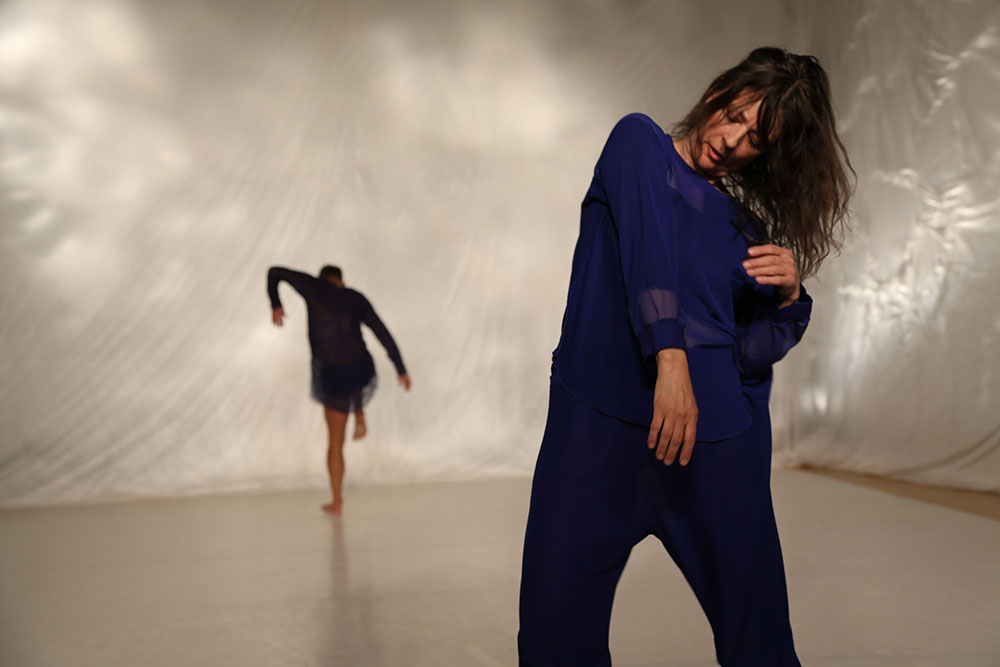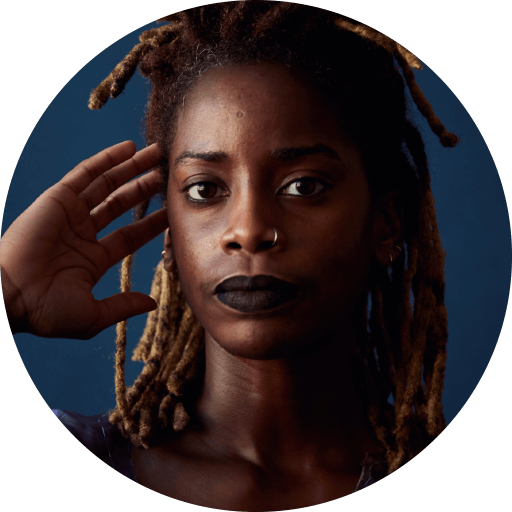Review: A Choreographer Who Excavates Misalignment
Siobhan Burke, The New York Times
Siobhan Burke, The New York Times

For Kathy Westwater’s new diptych of dances, “Revolver” and “Choreomaniacs,” the interior of the Chocolate Factory Theater has been sheathed in layers of translucent plastic, floor to ceiling. At first it seems to be made from multiple materials: Is that tinfoil? Yarn? But on closer inspection, you see that it’s just plastic — some smooth, some textured — and nothing more.
For the program’s full 90 minutes, this commitment to a single modality also runs through the dancing. Over these two separate but related works — which had their premiere on Thursday at the Chocolate Factory’s cavernous warehouse space in Long Island City, Queens — Westwater builds on her focused movement investigations of the past two decades, exploring what she calls “the disorganized body” or “misalignment.” What initially looks like indiscriminate wavering or flailing reveals itself to be a deliberate, even dogged, excavation of off-balance states.
Westwater began these explorations in the wake of 9/11, reflecting that time’s profound destabilization through a kind of analogous physicality. Crisis and suffering are still on her mind. A news release describes “Revolver,” a duet for her and Lance Gries, as examining “the existential threat of super-catastrophes,” and the group piece “Choreomaniacs” as inspired by the medieval affliction of choreomania, or dancing oneself to death. The works, as a pair, are also framed as straddling the division between the time before and the time since the onset of the coronavirus pandemic. (The process of creating “Revolver” started before.)
None of this is overtly apparent, but if you know it, you can see it. Both works express a sense of internal struggle, disorientation and trying to break free, intensified by the plastic encasement on three sides of the low wooden stage. (The artist-architect Seung Jae Lee designed the set.) By the end, some kind of blockage has been cleared, some essential energy unstuck, an ecstatic abandon surging through. The journey there is a slow burn, tedious but revelatory in the end.
“Revolver,” to a trippy guitar score by Ava Mendoza, introduces the stuttering, restless movement that persists throughout the program. Westwater arrives first, in royal blue pants and a matching shirt that sports an extra, dangling sleeve. (Claire Fleury designed the costumes, collages of sheer and opaque fabrics.) Establishing the theme of veering from vertical, Westwater leans woozily back, her torso swaying above firmly planted feet.
When Gries joins her, the two seem unified, even when physically distant, in their navigation of agitated, weighted steps, their feet like magnets drawn to the floor. As the score vacillates between rhythmic, melodic passages and warped dissonance, they look at times like they’re trying to worm their way out of their bodies. Madeline Best’s beautiful lighting, shifting from a neutral glow to sky blue behind the backdrop, suggests a world beyond this enclosed one.
In keeping with its title, “Choreomaniacs,” which seems to pick up where “Revolver” leaves off, plumbs wilder depths. Here Westwater is joined by four other dancers — Alex Romania, Rakia Seaborn, Stacy Lynn Smith and Nattie Trogdon — each resolutely individual but moving from a shared impulse. After the effortful opening work, freer moments come as welcome surprises, like the flinging kick of a leg or a vertiginous roll to the floor. The immersive music, by Mendoza and Mike Baggetta, feels like an extension of what came before, with added environmental noises. (When a siren sounds, it could be coming from the speakers or the street.)
In Westwater’s pursuit of misalignment, flashes of its opposite — rough alignments — prove satisfying by contrast, a break from the sameness of form. These works deliver a lot of one thing, with variation perhaps more perceptible to the performers than the audience. But every so often, out of amorphousness, something like unison emerges: a repeating phrase of lifted knees and plopped-down feet, or two people finding stillness at the same time. A different kind of harmony emerges at the end, as the dancers, all but Westwater, entangle in soft, heavy embraces. They continue to sway and falter, but there’s no question they will hold each other up.
Siobhan Burke for The New York Times, April 24 2023





























